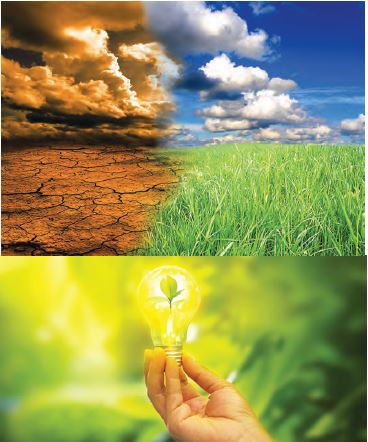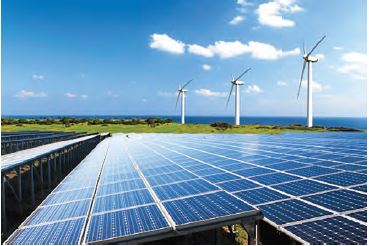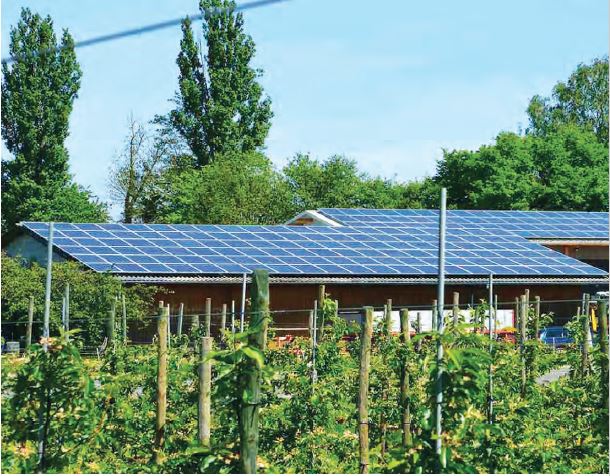 |
|
 |
STORY
DETAILS |
 |
|
| |
| |
 |
| Cover Story
|
 |
 |
| Textiles’ – the word brings up images of beautiful drapes – cotton, silk, chiffon, lace. Whether it is the material draped on the figurine of the lady f... |
|
 |
| |
read more... |
 |
|
 |
Lead Article
Textiles the word brings up images of beautiful drapes cotton, silk, chiffon, lace. Whether it is the material draped on the figurine of the lady from Mohenjadaro, the stylish drapes of Cleopatra, the ball dance gowns of the Victorian Era or the lovely dresses worn by our own queens and princesse...
read more... |
|
 |
| Articles |
 |
 |

|
|
Tapping Sustainable Energy Alternatives
|
|
|
The second lead article, which is also focus article, is written by Shri N Bhadran Nair. Citing a report of the World Health Organisation, the author has advocated for tapping sustainable energy alternatives
|

|

|

|

|
|
Financing Renewables in India
|
|
|
The third article is written by Shri P C Maithani, Adviser, Ministry of New and Renewable Energy. He has focussed on renewable energy resources
|

|

|

|
|
Steps to Achieve India’s Solar Potential
|
|
|
The special article is written by Sumant Sinha, Chairman and Managing Director of ReNew Power. He opines that India must also honour its global commitments on curbing greenhouse gas emissions
|

|

|
|
|
|
|
|
|
|
What has Changed? India Since 1950
Partha Mukhopadhyay, Aditi Gandhi |
|
 HOW HAS the Indian economy changed since Independence? Was there anything underlying the spurt of growth since 2002 or was it merely a flash in the pan? We argue here that the Indian economy is today private-led, far less dependent on agriculture and much more integrated into the international economy. It saves and invests much more and its workforce is more educated. Given appropriate policies, a new, higher growth path is distinctly possible. Figure 1 plots the growth in gross domestic product (GDP). Trend growth in India till mid-1980s was flat at around 3.5 percent, for so long that it was dubbed the ‘Hindu’ rate of growth. This growth fluctuated considerably, in part due to the large share of weather dependent agriculture. In the mid-1980s, as initial reforms were introduced (Rodrik and Subramaniam 2005), average growth moved up to about 5.5 percent and became more stable, till about 2002-03, when it begun to accelerate. Is this acceleration sustainable, or is the current downturn signalling a return to earlier growth levels?Five Big ChangesPredominant Private Sector This is about a change that did not happen. The government has never dominated the Indian economy, but Figure 2a shows that in the first forty years, partly because of trying to secure the ‘commanding heights’ of the economy, its contribution rose from 8.7 percent to 21.6 percent. HOW HAS the Indian economy changed since Independence? Was there anything underlying the spurt of growth since 2002 or was it merely a flash in the pan? We argue here that the Indian economy is today private-led, far less dependent on agriculture and much more integrated into the international economy. It saves and invests much more and its workforce is more educated. Given appropriate policies, a new, higher growth path is distinctly possible. Figure 1 plots the growth in gross domestic product (GDP). Trend growth in India till mid-1980s was flat at around 3.5 percent, for so long that it was dubbed the ‘Hindu’ rate of growth. This growth fluctuated considerably, in part due to the large share of weather dependent agriculture. In the mid-1980s, as initial reforms were introduced (Rodrik and Subramaniam 2005), average growth moved up to about 5.5 percent and became more stable, till about 2002-03, when it begun to accelerate. Is this acceleration sustainable, or is the current downturn signalling a return to earlier growth levels?Five Big ChangesPredominant Private Sector This is about a change that did not happen. The government has never dominated the Indian economy, but Figure 2a shows that in the first forty years, partly because of trying to secure the ‘commanding heights’ of the economy, its contribution rose from 8.7 percent to 21.6 percent. |
|
|
|
|
|
|
|
|
|
|
 |

|
Regional Languages
|
 |
|
|
 |
|
Regular
Column |
|
J&K Window : |

|
|
Do you know? : What is Forensic Auditing |
Forensic auditing refers to the auditing with the main aim to employ accounting techniques and methods to gather evidence to investigate the crimes on financial front such as theft, fraud etc.

|
|
|
 |
|
 |
 |